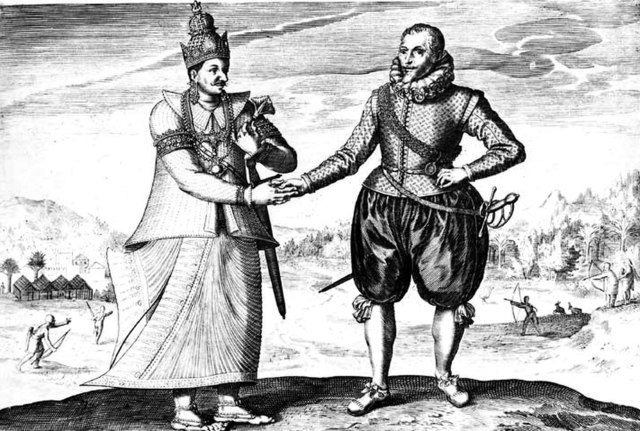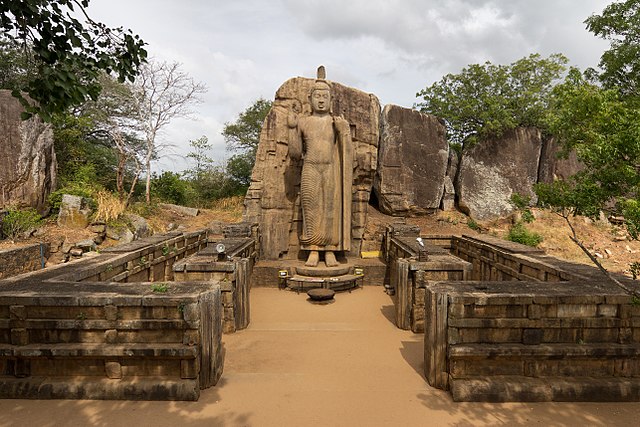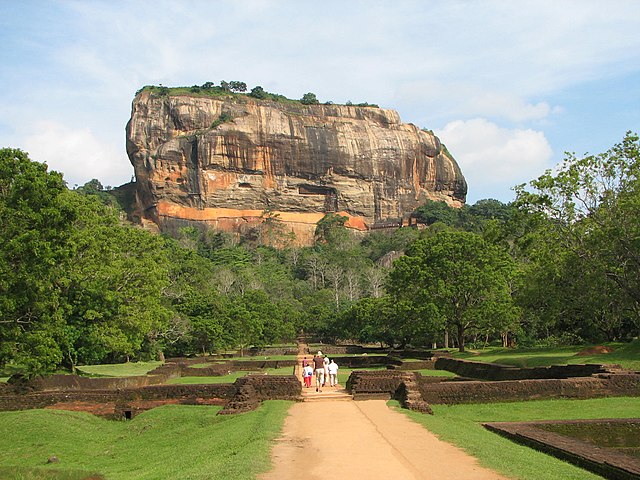Dutch Ceylon was a governorate established in present-day Sri Lanka by the Dutch East India Company. Although the Dutch managed to capture most of the coastal areas in Sri Lanka, they were never able to control the Kingdom of Kandy located in the interior of the island. Dutch Ceylon existed from 1640 until 1796.
Dutch Ceylon
Vimaladharmasurya I receiving Joris van Spilbergen, 1603
The Batticaloa fort, around 1665
Dutch Colombo, based on an engraving of circa 1680
Sri Lanka, historically known as Ceylon and officially the Democratic Socialist Republic of Sri Lanka, is an island country in South Asia. It lies in the Indian Ocean, southwest of the Bay of Bengal, separated from the Indian peninsula by the Gulf of Mannar and the Palk Strait. It shares a maritime border with the Maldives in the southwest and India in the northwest.
The Avukana Buddha statue, a 12-metre-tall (39 ft) standing Buddha statue from the reign of Dhatusena of Anuradhapura, 5th century
The Sigiriya ("Lion Rock"), a rock fortress and city, built by King Kashyapa (477–495 CE) as a new more defensible capital. It was also used as a Buddhist monastery after the capital was moved back to Anuradhapura.
The seated image of Gal Vihara in Polonnaruwa, 12th century, which depicts the dhyana mudra, shows signs of Mahayana influence.
A 17th-century engraving of Dutch explorer Joris van Spilbergen meeting with King Vimaladharmasuriya in 1602







